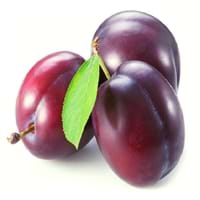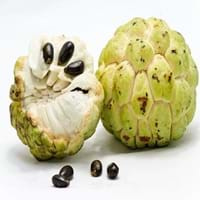Health Benefits
Cancer prevention, Cures gastro-intestinal troubles, Heart care, Increase in haemoglobin, Prevents diabetes
Cancer prevention, Heart care, Regulation of heart rate
General Benefits
Anti-inflammatory properties, Boosts immune system, Digestive aid, Eye care, Flu treatment, Helps in weight loss, Maintains healthy cholesterol level, Treatment of common cold
Anti oxidant properties, Anti-inflammatory properties, Boosts immune system, Controls blood pressure, Digestive aid, Strengthens bones
Skin Benefits
Anti-aging benefits, Brightens and lightens complexion, Reduces wrinkles, Skin revitalization, Treatment of dark spots
Reduces wrinkles, Skin rejuvenation
Hair Benefits
Prevents hair loss, Promotes longer and healthier hair, Protects hair, Remedy for split ends, Treatment of dandruff
Promotes longer and healthier hair, Treatment of dandruff, Treatment of Lice
Allergy Symptoms
Abdominal pains, Anaphylaxis, Vomiting
Anaphylaxis, Itching, Skin rash, Swelling of face
Side Effects
Allergic reaction
Allergic reaction, Possibly unsafe during pregnancy
Best Time to Eat
As a snack in the late afternoon, Eat the fresh ones, avoid mixing with any other foods, don't eat after meal., Morning time (before lunch)
As a snack in the late afternoon, Don't consume at night and before bed, Morning time (before lunch)
Vitamin A (Retinol)
Not Available
Vitamin B5 (Pantothenic Acid)
Vitamin C (Ascorbic Acid)
Vitamin K (Phyllochinone)
Not Available
Phytosterol
Not Available
Calories in Fresh Fruit with Peel
Not Available
Calories in Fresh Fruit without Peel
Not Available
Calories in Frozen Form
Not Available
Calories in Dried Form
Not Available
Calories in Canned Form
Not Available
Calories in Juice
Not Available
Calories in Jam
Not Available
Calories in Pie
Not Available
Season
Summer
Autumn, Spring, Winter
Varieties
Victoria, President, Czar, Ariel, Avalon and Oullins Gage
Andrews, Amarilla, Asca, Baste, Bays, Bayott, Behl, Canaria, Capucha, Deliciosa, Ecuador, El Bumpo, Guayacuyán, Jete, Juniana, Knight, Nata, Popocay, Sander, Smoothey, Tumba, Umbonada, Whaley and White Juliana
Color
Pink, Purple, Red
Green, Yellow
Inside Color
Yellow
White
Taste
Juicy, Sweet, Tart
Sweet
Soil Type
Clay, Loam, Sandy loam
Sandy loam
Climatic Conditions
Cold
Warm
Facts about
- In china, plums are used for production of wine.
- A chemical called amygdalin found in plum seeds, turns into toxic compound in human body.
- Plum tree produces fruit 3-5 yrs after planting.
- Cherimoya is also called as custard apple or chirimoya.
- The word cherimoya came from the Quechua word,'chirimuya',which means 'cold seeds'.
- The cherimoya is called as 'the tree of ice cream'.
Other Countries
Bosnia, Chile, India, Iran, Italy, Romania, Serbia, Turkey, United States of America
Argentina, Chile, Colombia, Egypt, Italy, Mexico, Peru, South Africa, United States of America
Top Importer
United Kingdom
United States of America
Botanical Name
Prunus domestica
Annona cherimola
Synonym
Not Available
Not Available
Subkingdom
Tracheobionta
Tracheobionta
Division
Magnoliophyta
Magnoliophyta
Class
Magnoliopsida
Magnoliopsida
Subclass
Rosidae
Magnollidae
Order
Rosales
Magnoliales
Family
Rosaceae
Annonaceae
Species
P. domestica
A. cherimola
Generic Group
Rose
Not Available
Difference Between Plum and Cherimoya
We might think that Plum and Cherimoya are similar with respect to nutritional value and health benefits. But the nutrient content of both fruits is different. Plum and Cherimoya Facts such as their taste, shape, color, and size are also distinct. The difference between Plum and Cherimoya is explained here.
The amount of calories in 100 gm of fresh Plum and Cherimoya with peel is 46.00 kcal and Not Available and the amount of calories without peel is Not Available and 75.00 kcal respectively. Thus, Plum and Cherimoya belong to and category.These fruits might or might not differ with respect to their scientific classification. The order of Plum and Cherimoya is Rosales and Magnoliales respectively. Plum belongs to Rosaceae family and Cherimoya belongs to Annonaceae family. Plum belongs to Prunus genus of P. domestica species and Cherimoya belongs to Annona genus of A. cherimola species. Beings plants, both fruits belong to Plantae Kingdom.









